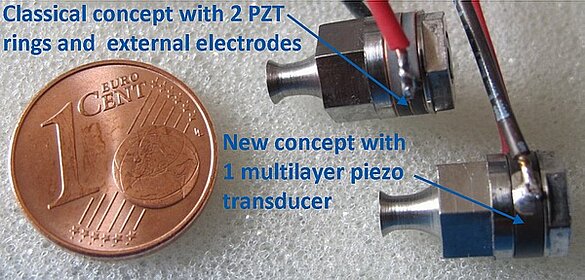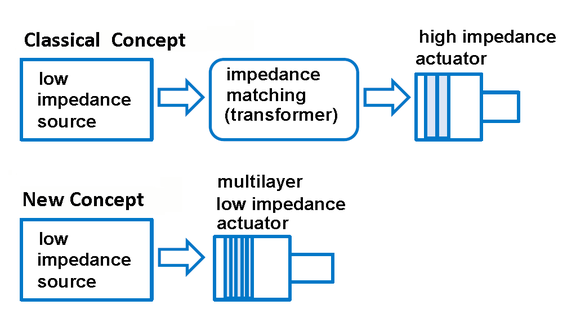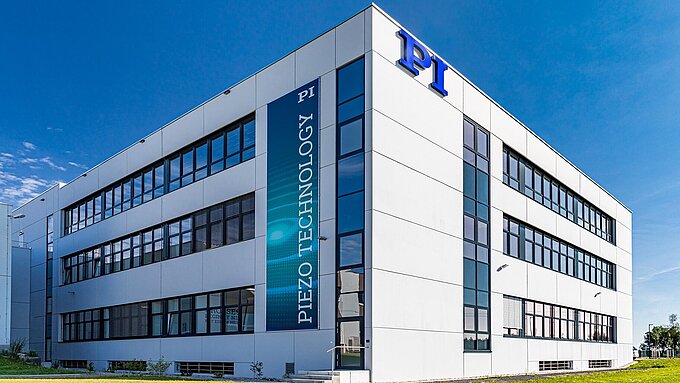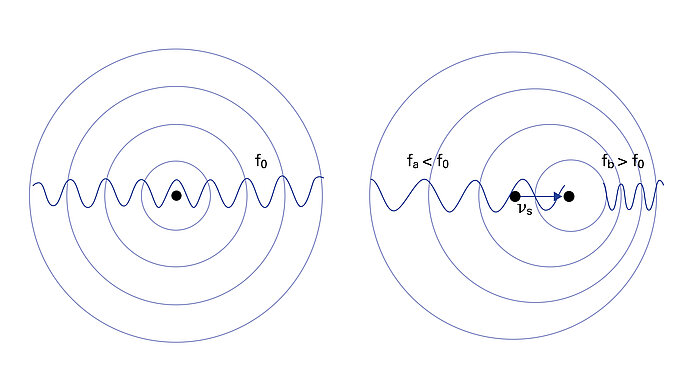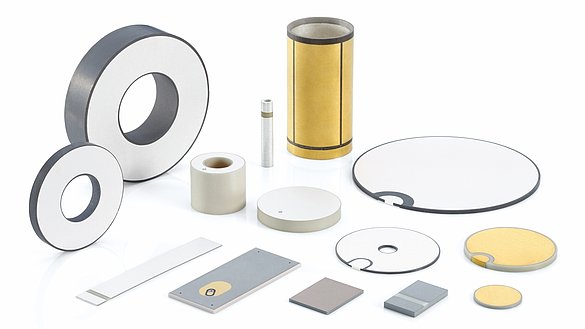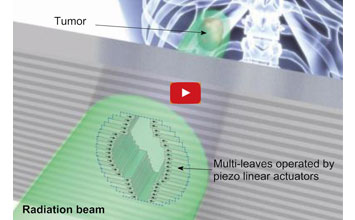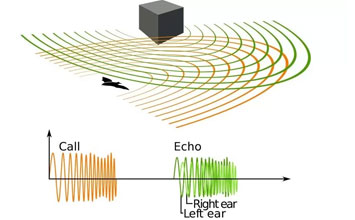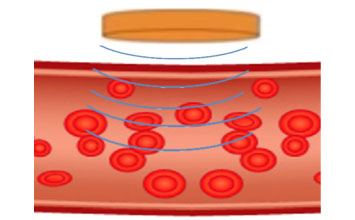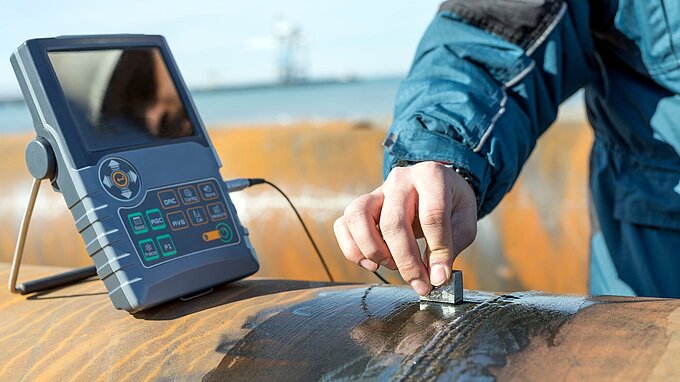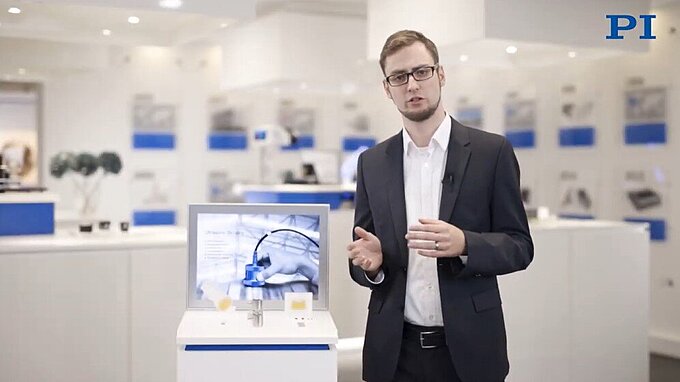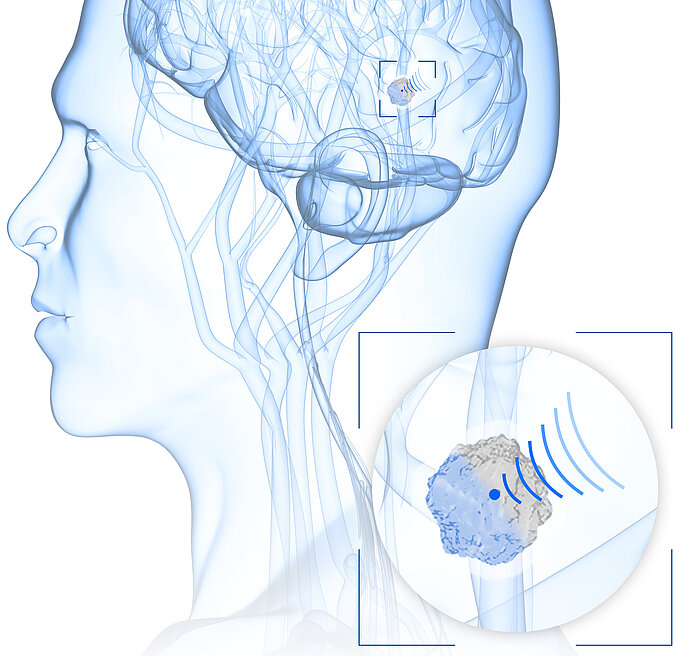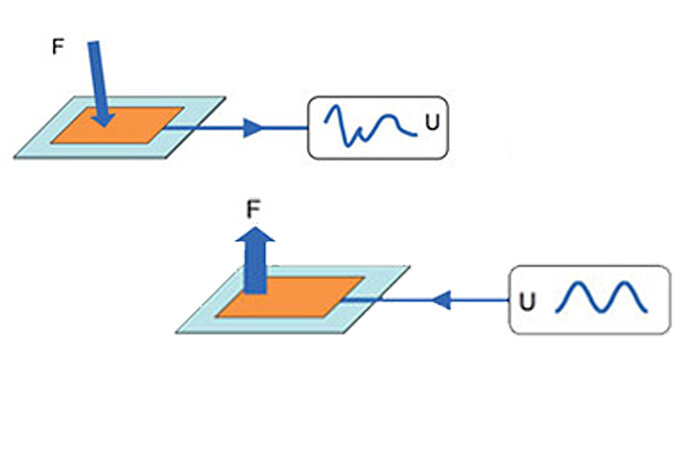Ultrasound Generation: What is the difference between Multilayer Piezo Transducers and Conventional Piezo Transducers
Cutting the Drive Voltage by almost one Order of Magnitude
In order to generate ultrasound with piezo transducers, operation at resonance is required for most applications. At resonance, power requirements are minimized as the amplitude reaches a maximum. High-Q piezo ceramic materials with low internal damping are needed to enable resonant operation.
Multilayer piezo transducers consist of many thin layers (typically 10’s of microns) of active ceramics produced in a tape casting process. Screen printed electrodes between the layers are co-fired with the ceramics in one step. The advantage here lies in the reduced operating voltage and the simplicity of integrating the piezo elements into a mechatronic system.
Until recently, multilayer piezo transducers were mainly used for precision positioning and fast switching / dosing applications with operating frequencies typically in the hundreds to few 1000’s of Hz.
Multilayer piezo elements are usually manufactured of so-called soft PZT materials, with high internal damping, making operation at resonance not feasible.
Ultrasound generators. Left: classical concept with two discrete piezo rings and electrodes.
Right: New concept with one single multilayer transducer – no additional electrodes required. Battery operation is feasible without transformer for impedance matching (3.6 V operating voltage). (courtesy ATHENA Technologie Beratung GmbH, www.myathena.de)

In the past, only discrete (bulk) piezo ceramic elements (rings, discs, blocks…) manufactured from ferroelectric hard PZT materials were available for ultra sound generation.
A new material (PIC 182), introduced at PI’s piezo research and manufacturing division PI Ceramic now enables the production of multilayer piezo elements with hard PZT materials– combining the advantages of both. The low operating voltage makes this new class of transducers suitable for sensitive medical applications such as ultrasonic surgery - ultrasonic scalpels are currently used in eye surgery.
Patented design with extreme reliability
PI Ceramic’s patented PICMA® Stack design features embedded electrodes with ceramic insulation (passive material) that protects the transducer better from adverse conditions than conformal coatings.
Proven in thousands of applications for precision positioning and fast actuation, piezo actuators manufactured in this process have been selected by NASA for the Mars Mission and passed accelerated life tests by several research institutes for Big Science applications equivalent to 10 and 20 years of operation.

Summary
The comparison results show that multilayer actuators can successfully be operated as ultrasonic resonance converters at high output velocities, similar to traditional 2-ring PZT transducers, while reducing the drive voltage by almost one order of magnitude. Ongoing improvements with the goal to reduce the dissipation are under way.
The lower drive voltage of multilayer components brings about advantages such as operation in critical conditions such as explosive environments and medical applications.
In addition, simple battery operation is possible, with reduced cost and complexity of the drive electronics. Battery operation enables mobile applications from measuring devices to asthma therapy (aerosol production).
Blog Categories
- Aero-Space
- Air Bearing Stages, Components, Systems
- Astronomy
- Automation, Nano-Automation
- Beamline Instrumentation
- Bio-Medical
- Hexapods
- Imaging & Microscopy
- Laser Machining, Processing
- Linear Actuators
- Linear Motor, Positioning System
- Metrology
- Microscopy
- Motorized Precision Positioners
- Multi-Axis Motion
- Nanopositioning
- Photonics
- Piezo Actuators, Motors
- Piezo Mechanics
- Piezo Transducers / Sensors
- Precision Machining
- Semicon
- Software Tools
- UHV Positioning Stage
- Voice Coil Linear Actuator
- X-Ray Spectroscopy

